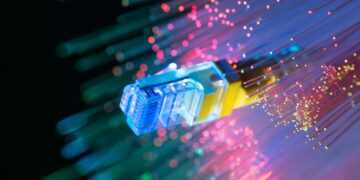Speed defines success today. Every business wants faster results and smarter systems. That is where High Performance Computing or HPC setups make a difference. They bring unmatched power to process data at lightning speed. HPC setups handle complex tasks that normal computers cannot. From weather forecasts to big scientific studies, HPC systems drive accuracy and performance.
A true High Performance Computing setup is not about having the biggest machine. It is about the perfect mix of parts that work together like a single strong engine. Every component plays a special role. Each one adds value and speed. The real power comes from the way these parts connect. This connection makes the system fast, reliable, and efficient.
Let’s explore the seven components that define a true HPC setup. Each one helps build performance that never slows down.
1. Powerful Processors – The Brain of Every HPC Setup
Processors are the core of every High Performance Computing system because they make decisions and perform all main tasks. The better the processor, the faster the results. Current HPC systems usually utilize multi-core processors such as Intel Xeon or AMD EPYC. Thousands of calculations can be executed using these chips in one second. That speed is what scientists and engineers need for data-heavy tasks.
How Processors Drive Performance
- They handle multiple instructions at once.
- They support parallel computing, which means many tasks run at the same time.
- They boost speed through higher clock rates and core counts.
In HPC systems, the processor does more than simple computing. It ensures that all nodes or smaller systems work together in sync. That smooth connection between cores gives true high performance.
As per a report, the global market of HPC is continuously rising. The total market share is expected to hit $49.9 billion by 2027.
2. High-Speed Memory – The Instant Access Zone
Memory or RAM in a High Performance Computing setup works like a fast-access workspace. It stores data that processors need right away. When memory is slow, even the fastest processor gets delayed. High-speed DDR5 or HBM memory types are common in top HPC systems. They provide instant access to huge data sets. More memory also means less time wasted waiting for files to load.
Why Fast Memory Matters
- It allows data to move quickly between the CPU and storage.
- It prevents system lags during large-scale simulations.
- It supports smooth multitasking during heavy workloads.
When processors and memory communicate without delay, overall performance rises. The key is balance. Too much focus on one without the other slows down the setup.
3. Storage Drives – The Backbone of Data Handling
Storage is where all the work of an HPC setup finally rests. Without reliable storage, the entire setup fails. Fast and large storage helps keep data safe and accessible.
The Role of Storage in HPC
- Stores raw input data and final processed results
- Supports single-speed data through SSD or NVMe drives.
- Minimizes downtime through loss of data.
Solid State Drives are the preferred choice for most modern HPC setups. They are faster than traditional hard drives. NVMe storage pushes this speed even further. It lets data travel quickly between memory and storage without slowdowns.
Storage systems also use RAID configurations. This setup helps balance performance and protection. If one drive fails, others keep the system running.
4. Networking System – The Speed Bridge Between Nodes
In every High Performance Computing setup, networking acts as the communication bridge. It connects nodes or smaller computers to form one large machine. The HPC systems are interconnected with high-speed systems such as InfiniBand or Ethernet. Such networks are low in latency and high in bandwidth. That means data travels between nodes without any wait time.
Why Networking Is Essential
- It allows all nodes to share data instantly.
- It ensures smooth communication across the system.
- It reduces data transfer delays during big projects.
A weak network can slow down even the most powerful system. That is why every HPC setup needs top-quality networking hardware. It keeps data moving fast and clean.
5. Efficient Power Supply – The Lifeline of Performance
Power supply is the blood of every High Performance Computing setup. Without stable and clean power, no component can perform well. A true HPC setup uses redundant power units. This means if one supply fails, the other takes over instantly. That ensures uptime and safety.
How Power Affects HPC Efficiency
- Continues to operate on heavy loads.
- Eliminates unpredictable failures of the system as a result of voltage drop.
- Enhances cost management through energy-saving capabilities.
The efficiency of energy is also important. The intelligent power management systems are able to check the energy consumption and regulate the power output. This reduces heat and power waste. It also extends the life of each component.
6. Cooling System – The Protector of Performance
Heat is a serious issue in High Performance Computing. Components become overheated, which lowers the performance. Everything is safe and stable due to the cooling system. The preferred method of cooling HPCs is liquid cooling. It conducts heat at a higher rate than air. It also maintains a minimal level of noise and energy consumption.
Methods of Cooling in HPC Systems
- High-speed vent, high-speed fans, and vents.
- Large-scale and energy-intensive Liquid cooling..
- Hybrid cooling for flexible thermal management.
As cooling keeps the system steady, the final key part brings everything together under one smart controller.
7. Management Software – The Mind Behind the Machine
Hardware alone cannot define a true High Performance Computing setup. Management software makes the system intelligent. It monitors every part and controls all activities.
What Management Software Does
- Measures performance and identifies problems on time.
- Balances load balances over a number of nodes.
- Maximizes resource utilization in order to make it more efficient.
The whole setup is as smart as having good management software. It is fast, powerful, and balanced to create a true performance.
Conclusion – Power That Defines the Future
A true High Performance Computing setup is not just about speed. It is about perfect teamwork between powerful parts. When each component works in harmony, the system delivers unmatched performance.
These seven components together define real high performance. They turn simple machines into powerful data engines. HPC setups shape the future of technology. They make tasks that once took weeks happen in hours. That is the real power of a true High Performance Computing setup, strength built through balance and connection.





































